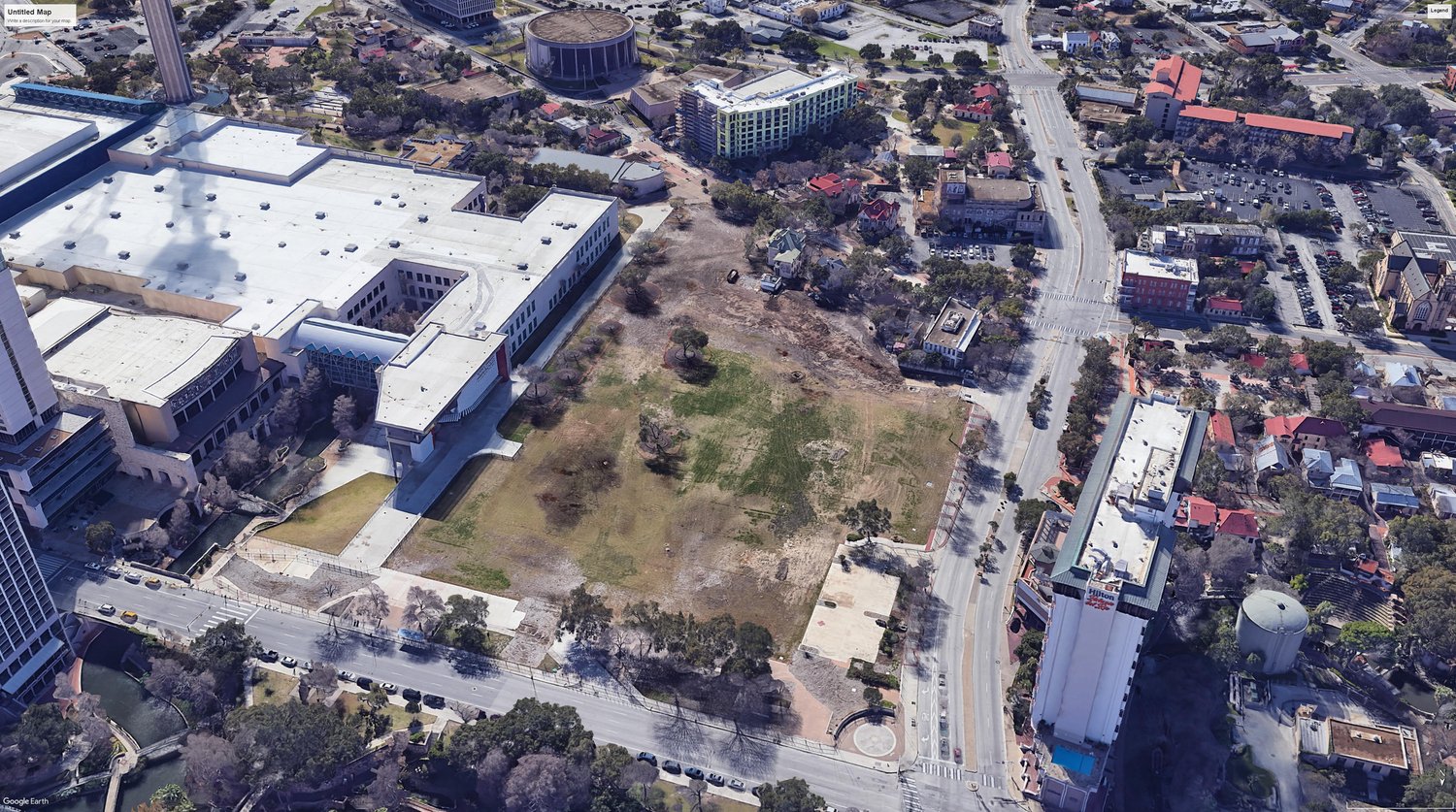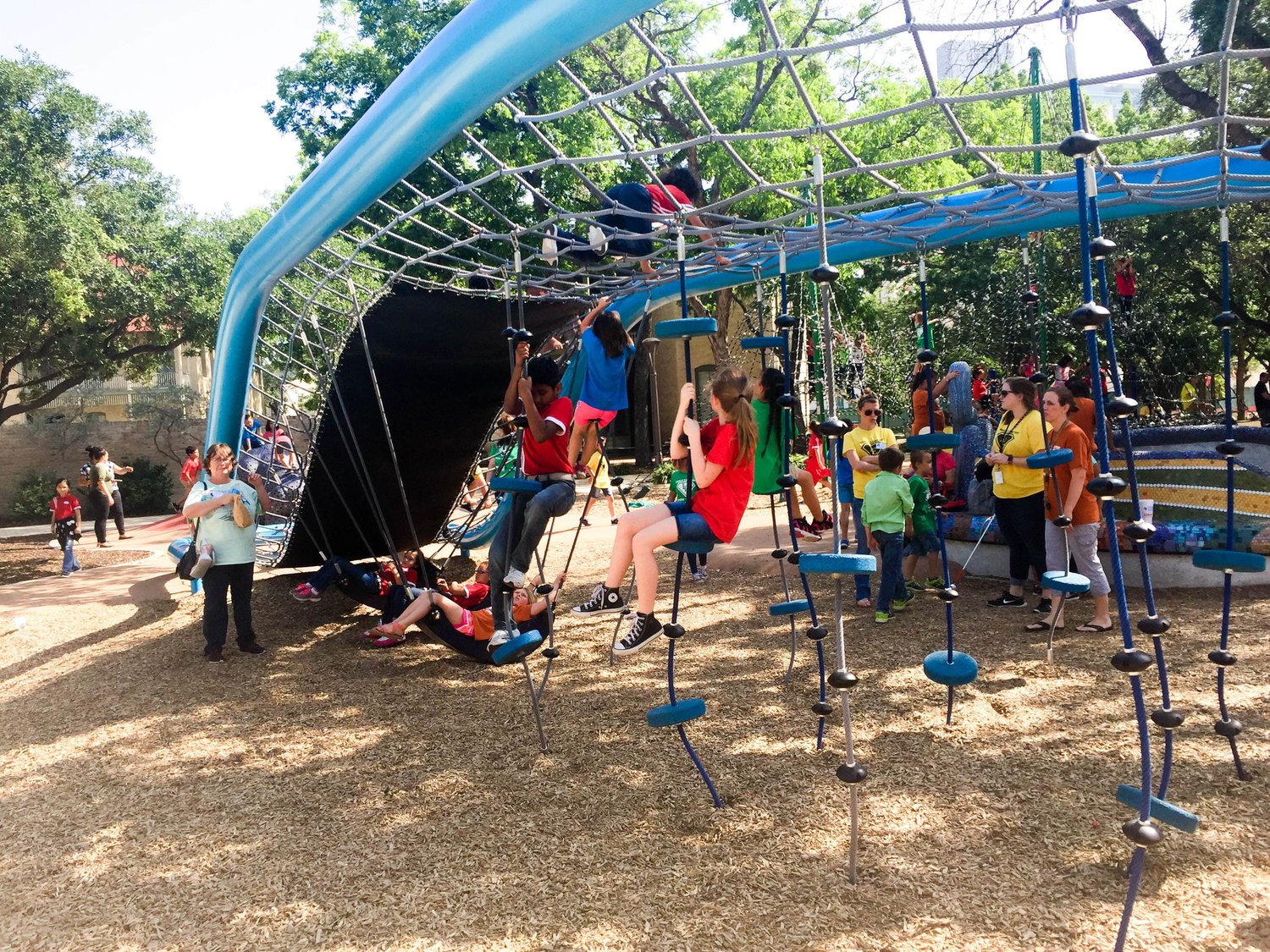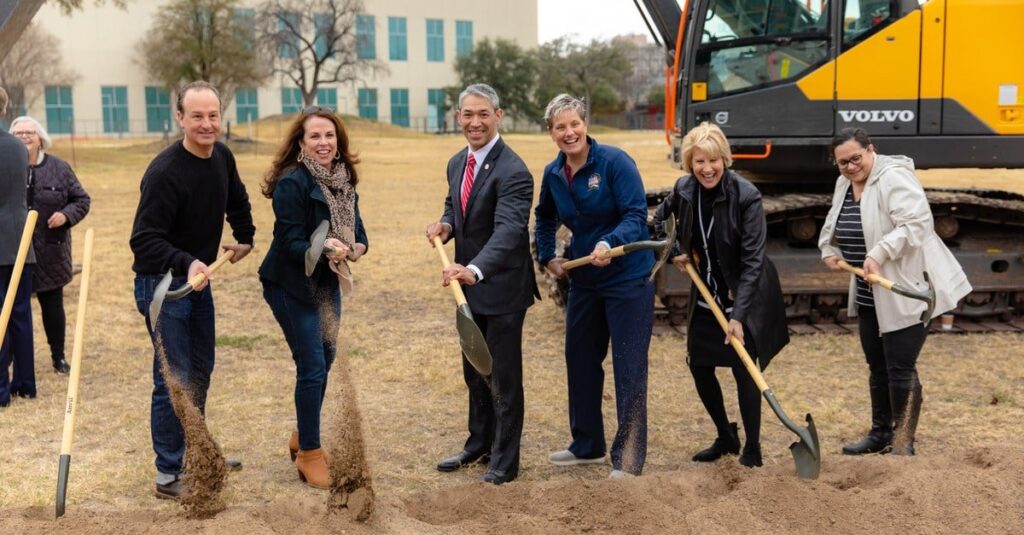At long last San Antonio’s new Civic Park broke ground on January 26, 2022. This public-private project will create downtown’s most significant park space and has been called “perhaps the most ambitious development in San Antonio history when you consider the cost, scale, and location.” I was thrilled to be able to work with Hemisfair and GGN to help develop the vision for this park.
The initial master plan for this former World’s Fair site, dubbed Hemisfair, was done as far back as 2012, led by Johnson Fain with Olin, HR&A, and Arup. In the following years three public spaces were envisioned and designed, by firms such as MIG, GGN, and the Project for Public Spaces:
· Yanaguana Garden, a six-acre mixed-use destination playground, was opened to the public for the first time in October 2015 and has come to become the second most visited park per acre in Texas with more than 80 percent of the visitors being locals.
· Civic Park, at 12 acres, is the largest of the three spaces and will feature civic events like concerts, with tree-lined promenades, fountains and pools, and a perimeter of shopping, dining, hotel, and residential.
· Tower Park will mix public space with more than a dozen historic structures, in the last phase of Hemisfair’s development.
Phil Myrick was the placemaking lead on all three projects, helping to establish the overall vision and program.
Tourism and suburbanism
Yanaguana Garden, Civic Park, and Tower Park all have a common thread – and that is to serve and attract local people above all others. For San Antonio, this is a deep-rooted obligation due to the fact that for fifty years the city’s downtown has been mainly the haunt of tourism. The River Walk, a flood project begun under WPA and constructed over a span of decades, eventually became one of the world’s most iconic public spaces. But over time it succeeded especially as a tourist destination, and most locals visit once or twice a year.
Meanwhile, San Antonio’s downtown never recovered from the urban malaise that affected all U.S. cities in the late 20th century, and the city has remained adamantly suburban. For decades, while the River Walk was teeming with visitors, up at the street level the city was a ghost town, characterized by overly-engineered streets that made walking a chore, and an almost complete dearth of retail or residents.
The Decade of Downtown
But, over the last 15 years or so, a devoted and passionate group of city leaders, developers, civic boosters, historians, and most recently the University of Texas, have helped create a surge of investment in making downtown a better place to live. This momentum was given a significant boost in 2010 when Mayor Julián Castro announced his “Decade of Downtown,” an initiative that left an indelible legacy.
Although in 2022 it is still behind the curve (other major cities enjoyed their comeback of downtown many years ago), San Antonio’s downtown momentum has now passed a tipping point. I predict this sleeper of downtown will soon emerge as America’s latest downtown darling, a success story long in the making.

Build downtown for locals
The mantra during this entire period has been, roughly, “building downtown for locals, not tourists. We’ve been pushed out by the tourists for too long.” The return of locals only seems right, for what is one of America’s very oldest cities with a totally unique and authentic culture. Steeped in a brew of Mexican, Native American, and Texian roots, the city is deeply comfortable with its multiculturalism, and the city has long been majority Hispanic (over 60% Hispanic in the 2020 census).
With this amiable diversity and a renewed commitment to downtown, San Antonio represents America’s past, present, and future in the best possible way. A toast to the Civic Park, the city’s latest undertaking in a decade of authentic placemaking.


